FEBRUARY, YOUNG FOOLS, AND OLD FELLERS
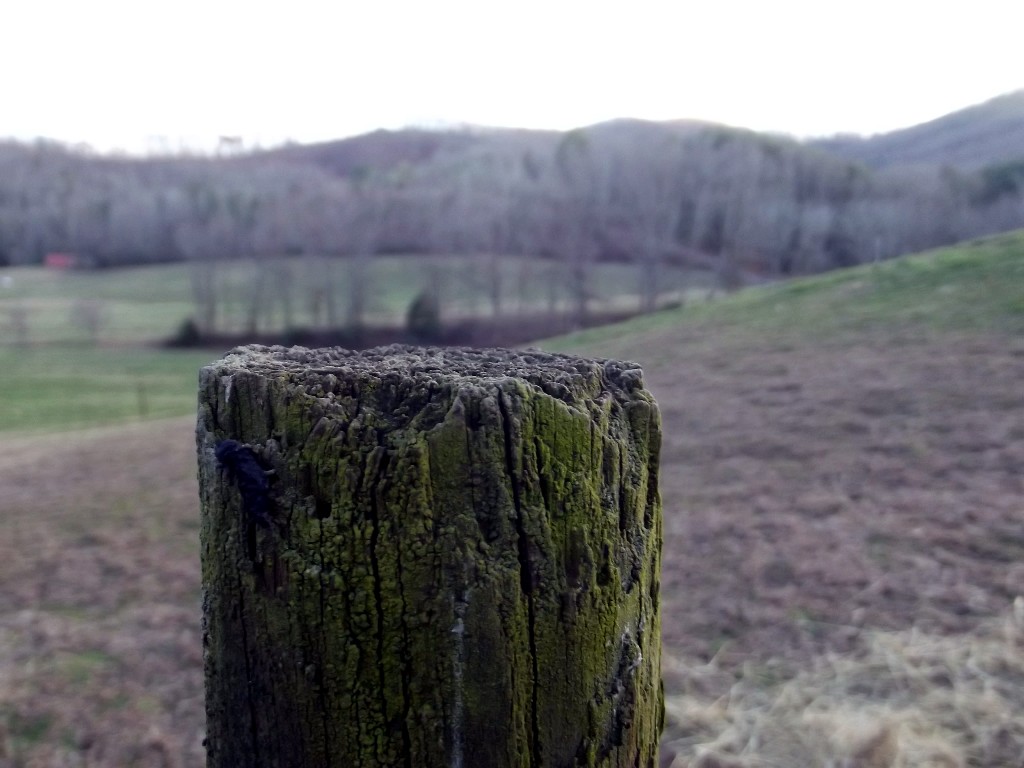
As I’ve noted in this newsletter and elsewhere over the years, my Grandpa Joe didn’t have a great deal of use for the month of February. He had ample reason for his perspective, something which I realize was often the case when I pause to reflect on his ruminations. February in the Smokies tended to be cold, damp, and dismal, with long periods of soaking rain or a mix of snow and ice being commonplace. The winter woods were grey and grim, the best of the year’s small-game hunting had come and gone, it had been many a month since anything fresh from the garden graced the family table, and this was the season when what Grandpa usually styled the “miseries” seemed to be at their worst. Then, as remains true today, it was difficult to argue with his contention to the effect of “it’s a good thing February is the shortest month. A body couldn’t bear no more of it.”
Thoughts of that sort usually emanated from one of our countless sessions of enjoying a comforting fire while he told tales and I drank them in with a thirst which was unquenchable. At some point though, maybe wanting to settle into a bit of a nap (Grandpa swore he never napped and he could get pretty snippety if you suggested otherwise, but he sure did plenty of resting his eyelids in the rocking chair which was his equivalent of today’s fancy-dancy, padded recliners), he would stop grousing and either turn to what he called “dreamin’ and schemin’” about our plans for the future or suggest it was time for me to indulge in some outdoor activity. “Young fools should get out and about in February,” he’d opine, “while old fellers need to stick close to hearth and home.” Mind you, Grandpa was well into his seventies before heeding his own advice, but a fall in the snow while squirrel hunting which resulted in a shattered hip, followed by a lengthy period of recuperation, penetrated even his mule-like stubbornness. For once he followed his oft-uttered admonition: “You’ll learn.”
Having now reached the point in my own life where Grandpa Joe was when doing all this philosophizing, I have much fuller appreciation of the fact that February is a time when it’s fine for young fools to be out tramping through the fields and woods while for old fellers it’s a dandy month to reminisce.
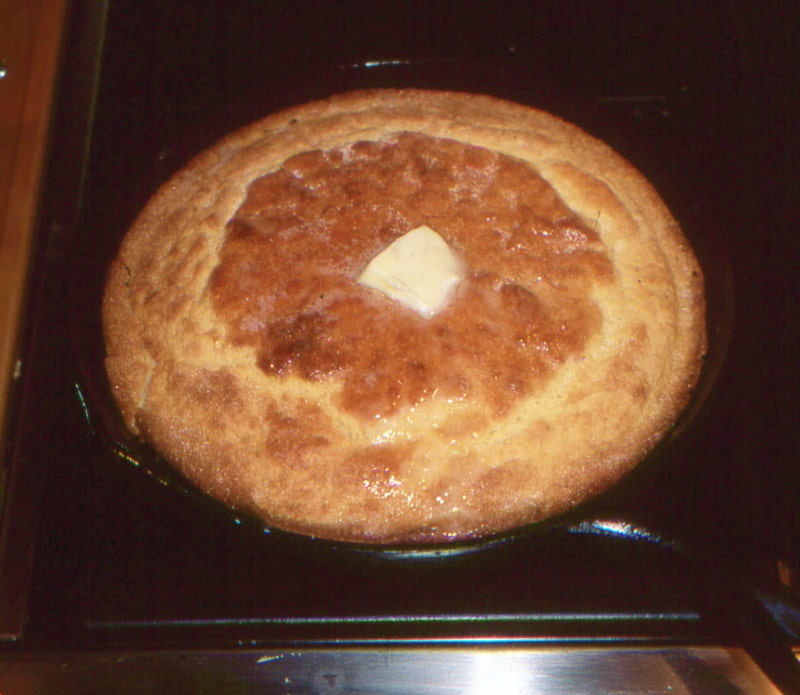
Pone of Cornbread
One area where I’ve been doing a lot of that lately involves food. In one sense some might suggest I lived a youth of culinary deprivation. As a family we never, ever “dined out.” There were several restaurants in town and since they stayed in business presumably a portion of the local population ate at them with regularity, but we didn’t. That would have been a frivolous expenditure of funds my parents didn’t have and besides, Momma could offer finer fare than what they featured. My sit-down dining experiences of any kind away from home up to the point when I went off the college were extremely limited other than gatherings at the homes of other members of the extended family. There might be a meal or two at church each year, an annual Christmas feast connected with Dad’s membership in first the Lions and later the Rotary Club, the rare meal at the home of a friend (interestingly, my friends ate at our house a lot, which probably speaks volumes about Momma’s cooking), and more frequently burgers or hot dogs at a local café or one of the two local drugstores which offered a limited short order menu. That was pretty much it, although there was a local drive-in which had short order items (it still does today).
Beyond that, there were other culinary limitations aplenty. Here’s a list, pretty much off the top of my head, although I’m sure they encompassed much more than what I have listed.
*I never had what was then called a “pizza pie” until the last year of my undergraduate college education.
*Our home front adventures in pasta were limited to two dishes—macaroni and cheese and spaghetti.
*We seldom if ever had melon of any type except in mid- and late summer.
*Tex-Mex dishes were as alien to my existence as restaurant dining, and the same was true of Greek, Italian, French, and Asian cuisine.
*We ate quite a bit of rice, but it was almost exclusively just plain rice adorned with gravy or a baked rice dish featuring onion and chicken broth Momma fixed. The way we ate rice most frequently, however, was as a dessert dish. Rice pudding, liberally studded with raisins, was a favorite, and leftover rice re-heated and doused with sugar, butter, and milk was quite satisfying as well.
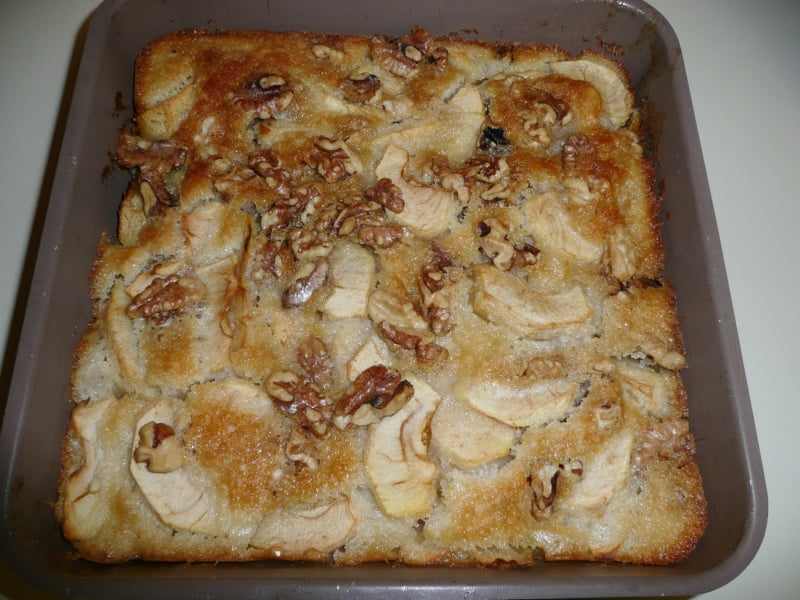
Apple Cobbler
What we did have, and in ample quantities, was soup (almost always vegetable or vegetable beef utilizing soup mix Mom had canned or just leftover veggies), various dried beans cooked with streaked meat, cornbread, greens, cooked apples (Momma had a goal of putting up 200 quarts each year), green beans, and both sweet and Irish potatoes. The latter were cooked in all sorts of ways, and a couple of times Momma even made sort of homemade potato chips although she baked them instead of frying. There was chicken every Sunday, pork in a variety of guises, small game (mostly rabbit), and very rarely, roast beef. Usually when we had beef it was hamburger—stretched a long way in milk gravy or in a meat loaf which included plenty of bread and a couple of eggs mixed in before the loaf went into the oven. Desserts ran strongly in the direction of fruit cobblers, although there were cakes and fried pies as well. Looking back I realize our fare was simple, but there was plenty of it and Momma’s cooking genius assured that it was always tasty. We might have eaten what city dwellers would have deemed poor folks food, but for my tastes, then and now, we dined like royalty.
THE LIGHTER SIDE
Herbert “Hub” Hyde was an old-time mountain lawyer/politician who grew up in my home town. While I didn’t know him I went to school with two of his younger siblings and knew them well. Hub was a genuine success story. He grew up dirt poor but through hard work, serious study, and utilization of a powerful intellect, Hyde eventually became a renowned orator, highly successful lawyer, and powerful presence in the North Carolina Democrat Party. He served terms in the state legislature as both a representative and senator and in late life wrote a number of delightful books.
Hub was a powerful orator—slightly irreverent in terms of breaching social bounds; quick with a quip; and able to cite long passages from the Bible, Shakespeare, Romantic poets, Greek literature, or mountain sayings at the drop of a hat. In the state legislature or courtroom he was so beguiling that when folks learned he was going to make a speech or be in court defending some moonshiner or other wayward soul, they made a point of being in the audience. He offered free entertainment at the highest level.
On one occasion, however, he was left in a heretofore unheard of position—Hub was rendered speechless. It came about at some type of social gathering for legislators in Raleigh, one of those elbow-rubbing events where whatever entity was footing the bill for food and drink obviously hoped to wield some influence. Circulating during the cocktail hour, Hyde came upon a fellow legislator of the opposite party (Hub was a die-hard mountain Democrat) escorting a lovely young woman. In his normal jovial fashion, Hyde ventured something to the effect of: “What is a beautiful woman like you doing in this rascal’s company?”
It so happened that the lawmaker who was the target of Hyde’s ribbing was the proud possessor of a new, brightly colored Volkswagen beetle at a time when that distinctive automobile had just come on the market. It was so novel, so strikingly different, that everyone simply called the lawmaker’s ride “The Thing.” Clearly that name was familiar to the fair young lass Hyde had jokingly questioned regarding her choice of companions. Clearly less well endowed with wit than bodily proportions, the woman innocuously replied to Hyde’s question. “You ask why I’m with him. Have you seen his Thing?” For once, with everyone within earshot laughing uproariously, Hyde had no response.
JIM’S DOIN’S
There were a couple of developments in my life this past month which brought me a quiet but deep and meaningful measure of pleasure, enough so I thought I would share them. Although I may have mentioned it once or twice over the years in this newsletter, I don’t think I’ve devoted much attention (and possibly none) to the fact that the sport of soccer was a huge part of my life for many years. I was introduced to the sport in college and advanced rapidly enough to make the starting squad at King College (now King University), my undergraduate alma mater, a few matches into my first season of competition. Subsequently I played club and semi-professional soccer for a number of years, but I also got into coaching and refereeing.
My first job, fresh out of college, was at Hargrave Military Academy in Chatham, Virginia. I was hired, in part, to start a soccer program there and did so. It’s also where I met my future wife. While I was in graduate school I continued playing on various teams but also refereed high school and college matches in order to earn a few extra and much-needed dollars. Fast forward a decade and I was through graduate studies and a professor at Winthrop. I helped start a local youth program which is today thriving, along with a men’s club team. Then, when the university became co-educational the powers-that-be decided men’s sports should be added. Since I had a fairly extensive background in the sport I was asked to take on a coaching job in addition to continuing my full-time activities in the classroom. I agreed and for a dozen joyful years interacted with several hundred young men, established a successful program while making the transition from NAIA to NCAA Division 1 status, and all the while remained keenly interested and active in the sport.
A few weeks back two individuals whom I coached in the late 1970s and early 1980s called me on some kind of connection where both could talk even though they were half a continent apart. I immediately knew something was up, since they were both on the line with me, but I was wonderfully surprised when they told me that the two of them, with help from dozens of others I coached over the years, had established the James Casada Soccer Scholarship at Winthrop. It is a fully vested scholarship, which means that there’s enough money in it to earn interest so the annual presentation can continue in perpetuity. Moreover, the criteria for recipients will be exactly what they told me I always “preached” as a coach; namely that academics and being a good citizen and contributor to society took precedence over simple athletic success. It’s not often I’m lacking for words, but on this occasion I couldn’t do much except mumble how honored and grateful I was. Suffice it to say that this tangible indication that I had an impact in the shaping of a grand bunch of fine men moved me deeply.

The second development, although far less significant to me, was nonetheless pleasing. I got word through the librarian in Bryson City, NC, where I grew up and where my mother was the local librarian for a decade, that my new book, A Smoky Mountain Boyhood: Memories, Musings, and More, had been selected by the North Carolina Library Association as its “Book of the Month” for their January newsletter. I know the local librarian had a hand in this, and it warms the cockles of my heart to think that an effort of mine which has tangible links to a job Momma loved (she didn’t serve as librarian until all us children were grown) has been recognized. If you haven’t gotten the book I still have plenty of copies in stock and would urge you to consider doing so. It’s received some flattering reviews on Amazon, but I’d hope you would order directly from me. Details are available on my website, www.jimcasadaoutdoors.com.
Recent writings which have found their way into print include my regular culinary contribution, “Good Taste,” to Smoky Mountain Living. The piece in the Feb./Mar. issue is “Mountain Soul Food” and focuses on the same sort of fare, stews, covered in the recipes below. There are several pieces in “Sporting Classics Daily,” which is a blog-type adjunct to Sporting Classics magazine. They include “Shrimp-Stuffed Venison Tenderloin,” “Robert Ruark: A Man of Startling Contrasts,” and “Nick Lyons: Giant of Modern Sporting Letters.” The current issue of the magazine also includes by regular books column on Nick and his grand memoir, Flame in the Straw.
********************************************************************************
MY RECENT READING
I’ve always got two or three books going at once and for the most part I read at times when others would be watching television. A laundry list of books I’ve read in the last few weeks will give a pretty solid indication of my tastes. I read Lee Smith’s autobiographical Dimestore, along with re-reading Robert Morgan’s Gap Creek and Rick Bragg’s Ava’s Man, simply because they are loosely connected with an upper level English course in Appalachian literature my granddaughter is taking in college. I decided, given my interest in the region and modest contributions to its literature, along with the fact that I’ve collected books on Appalachia for decades, that I would sort of unofficially “audit” the course with her. That will involve reading all her assigned material and, as is already happening, branching out into related reading.
On the pure entertainment front I have thoroughly enjoyed the “Yellowstone” Kelly trilogy by Western writer Peter Bowen, who died recently. He’s good, gets his historical setting right, and at times is flat-out hilarious in his descriptions. I’ve also devoured a couple more books by Wilbur Smith.
I’m always digging into works on people who interest me or on subjects which tickle my fancy. Recent excursions in that direction include reading Jesse Stuart’s My World (autobiographical essays), a scholarly study by Heidi Altman with the title Eastern Cherokee Fishing (it’s on methods of consumptive fishing and has little to do with sport) and Mary Bohlen’s Heritage Cooking Inspired by Rebecca Boone (I found it disappointing, maybe because I expected more in the way of recipes and food lore and less about the author’s activities as a historical presenter).
***********************************************************************************
FEBRUARY FOODSTUFFS
February is a time for hearty meals—soups, stews, or other dishes which are not only tasty but somehow help dissipate the doldrums associated with cabin fever. I know that on a personal level I can sit down at the table to a steaming repast featuring items from my garden or ventures afield and fill not only the middle regions of the inner man but find mental fulfillment as well. Such was recently the case with the first recipe offered this month, and all of them feature fare from the field appropriate for the season.
CREAMED WILD TURKEY AND PASTA
Frugal soul that I am, and my parents and grandparents taught me wonderfully well on that front, I try to utilize every bit of the edible portion of any wild turkey I’m fortunate enough to kill. That means, among other things, cooking the wings, thighs, back, and drumsticks in a big stew pot until the meat readily separates from the bone. I then remove it, chop into small pieces with an ulu, and freeze for future use. The resulting stock is also put away in the freezer.
Recently I pulled a package out with the intention of making wild turkey tetrazzini, only to discover I lacked a couple of ingredients. Accordingly, I just took another direction, and the end result was really pleasing. Using a large frying pan, I sautéed diced onion pieces, three garlic cloves which had been squeezed in a garlic press, and two sticks of celery cut into small sections in a half stick of butter.
While that was in process I placed the turkey in a large saucepan and to it added three-quarters cup of whole milk, three-quarters cup of heavy whipping cream (I always have it on hand because I use it in making biscuits), a cup of the broth saved from when I had originally cooked the dark meat portions of the wild turkey, and a can of cream of mushroom soup (without the added can of water called for if you are making it into soup).
As the cream/milk/broth/meat/mushroom soup mix warmed (you’ve got to be careful with heating milk in any form because it scorches easily) I stirred the sautéed mix occasionally and got a pot of pasta cooking. I used spaghetti noodles but pretty much any type of pasta is suitable. Once the onions and celery were translucent I added the creamed meat, a tablespoon of Italian seasoning, some dried parsley flakes, and ground black pepper over the whole mix. I often do not add salt to an entire recipe while cooking, especially if there are any canned ingredients (such as the mushroom soup) involved. Over salting is a disaster you can’t rectify; adding salt to individual servings is simple enough if you want more.
When the pasta reached the al dente stage I drained it and placed it into a sizeable stew pot before pouring the creamed meat mix on top and stirring. The result, topped with slices from a couple of boiled eggs and featuring a fruit salad as a side, was delicious and provided a fine example of how you can improvise and come up with something scrumptious.
WILD TURKEY PATE
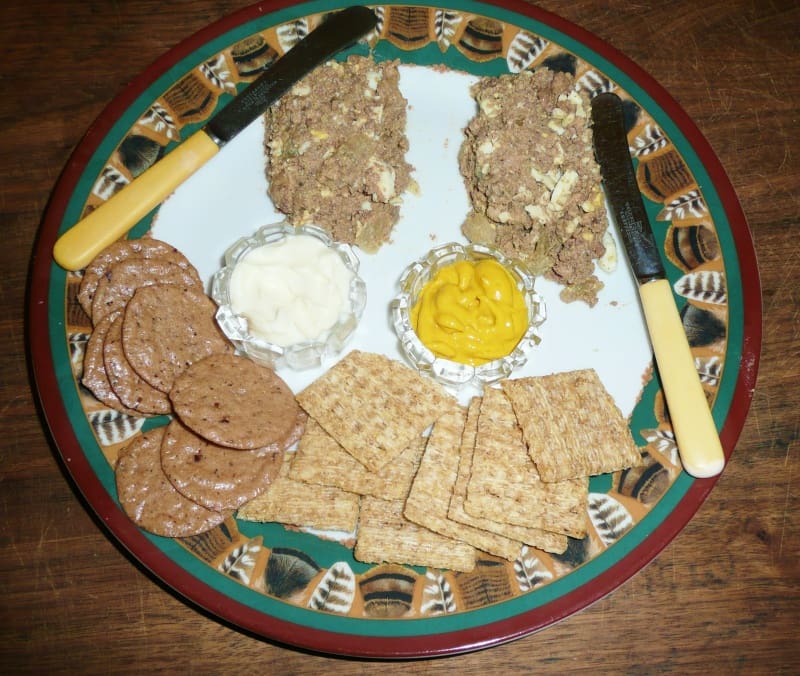
The organ meat (liver, heart, and gizzard) from wild turkeys is frequently discarded, but to do so is to be wasteful and deny yourself and friends a real taste treat. Utilization of these sometimes overlooked portions, often in gravy and sometimes in dressing, can mean some fine eating. That’s particularly true when the giblets are prepared as pate. Here is a simple way of enjoying pate as an appetizer, snack, or sandwich spread.
Giblets (heart, liver, gizzard) from two or three wild turkeys
2 boiled eggs
1 small sweet onion (or half of a large onion)
3 cloves garlic
Butter or olive oil
Salt and pepper to taste
Clean and chop the giblets into small pieces and sauté in a large frying pan with the chopped onion and garlic using butter (my preference) or olive oil. Then mince thoroughly by hand (leaves a bit of texture thanks to larger bits of meat) or in a food processor and allow to cool. Boil two eggs then peel and chop them finely. Add salt and black pepper to taste. Mix minced giblets and eggs thoroughly and press into a bowl or mold and chill until solid. Serve cold.
WILD TURKEY AND DUMPLINGS
For a culinary spirit lifter, at least in my view, turkey and dumplings has it all over chicken soup. Here’s an easy recipe for a toothsome traditional favorite, with the only significant difference being the substitution for the “lesser” wild turkey parts mentioned above for chicken.
3 cups chopped wild turkey
1 large sweet onion
4-5 large carrots scraped and cut into two-inch sections
4 stalks celery cut into sections
8 cups chicken broth or the equivalent amount made using stock you have made when cooking wild turkey
Salt and black pepper to taste
Green peas or spinach
Cook the turkey, carrots, onion, celery, and seasoning in a large stew pot holding the broth for an hour. At the end of the hour add ¾ cup of green peas or a double handful of washed spinach and cook for an additional fifteen minutes. Add cooked dumplings to the turkey-vegetables-broth and serve piping hot.
DUMPLINGS
½ cup milk
1 cup flour
2 teaspoons baking powder
½ teaspoon salt
Slowly add milk to dry ingredients. Drop by teaspoons into boiling liquid. Cook for 15-20 minutes or until dumplings are done in the center.
CROCKPOT VENISION OR BEEF STEW
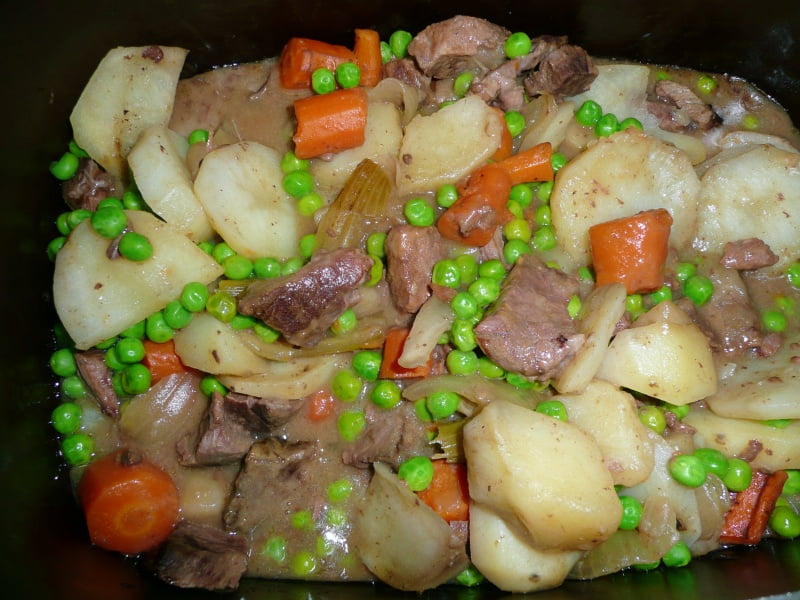
In our kitchen, this stew has almost always made with venison. I try to end each fall hunting season with at least two deer in the freezer, but for non-hunters, beef works just as well and is of course readily available. The great advantage of this dish, beyond taste, is that once it is in the crockpot you can go about the day’s business knowing that a hearty meal requiring little further attention awaits you a few hours down the road.
1 pound meat chunks (roughly one-inch cubes)
4 medium potatoes, peeled and chopped
1 medium onion, chopped
2 carrots, chopped
3 celery ribs, chopped
1 cup sliced fresh mushrooms
1 (10 ¾ ounce) can onion soup
½ soup can of red wine
½ soup can of water
Black pepper and salt to taste
1 (5-ounce) package frozen green peas
Place meat, potatoes, onion, carrots, celery, and mushrooms in crockpot and barely cover with onion soup, wine, and water. Cook on medium for six hours or until meat and vegetables are tender. Add peas (and more wine and water if needed) and increase heat to high. Cook until peas are tender. If desired, the stew can be thickened at this point with a flour and water paste or a bit of cornstarch. I like it with plenty of juice, because that melds with cornbread, an ideal accompaniment along with a green salad, in a most satisfying way.
CHICKEN PAPRIKASH
When I was in graduate school at Vanderbilt, I played semi-professional soccer for a local club, the Nashville Internationals. Much of the team was made up of Hungarians who had fled their native country at the time of the 1956 revolution, and we became close friends with a number of them. Any time we got together for a post-game meal, just some simple camaraderie, or during the holidays, THE key foodstuff was always chicken paprikash. Chicken was the cheapest meat available, with this dish it went a long way, it linked these young men and their families who had fled their beloved country for a free way of life to the world they had left, and best of all, it was delicious.
Whole chicken cut into pieces
2 tablespoons lard or olive oil
1 large onion, chopped
3 plum tomatoes, chopped, or the equivalent in dried tomatoes
1½ tablespoons of Hungarian paprika
2 teaspoons cornstarch (or a flour-milk mixture)
1 teaspoon salt
1 teaspoon freshly ground black pepper
1½-2 cups sour cream (plain yoghurt can be substituted)
Heat lard in a large Dutch oven, add onion, and cook until tender and golden brown (about four minutes). Add tomato, cook a few minutes, and stir in paprika until you have a deep red color. Add chicken, stir and cook at medium low heat with lid on Dutch oven for two hours or until tender. Mix flour (or cornstarch), salt, and pepper and add to mixture, bringing to a boil. Then immediately reduce heat by adding sour cream and mixing thoroughly. Do not bring to a boil again. Serve with dumplings or over noodles.